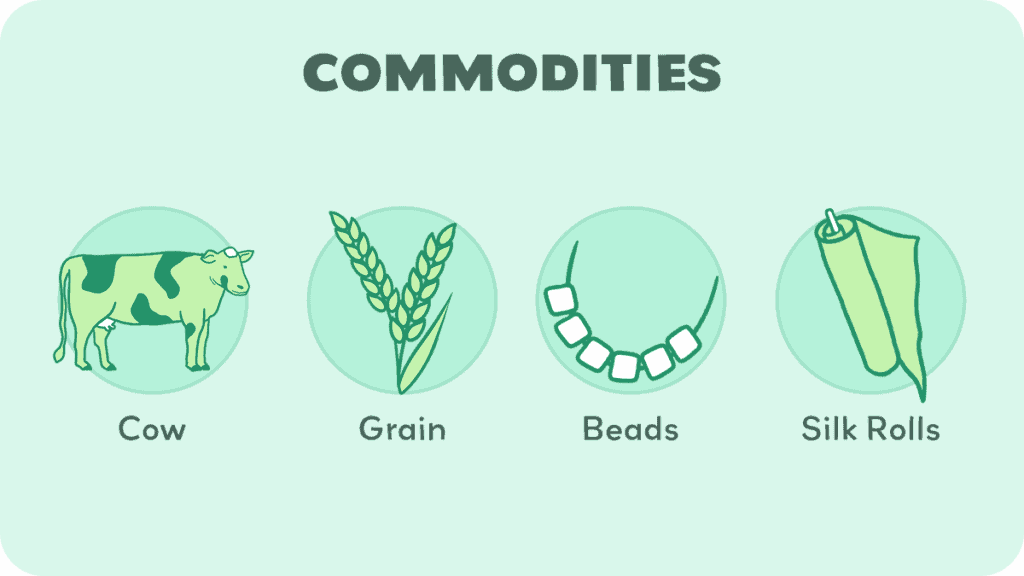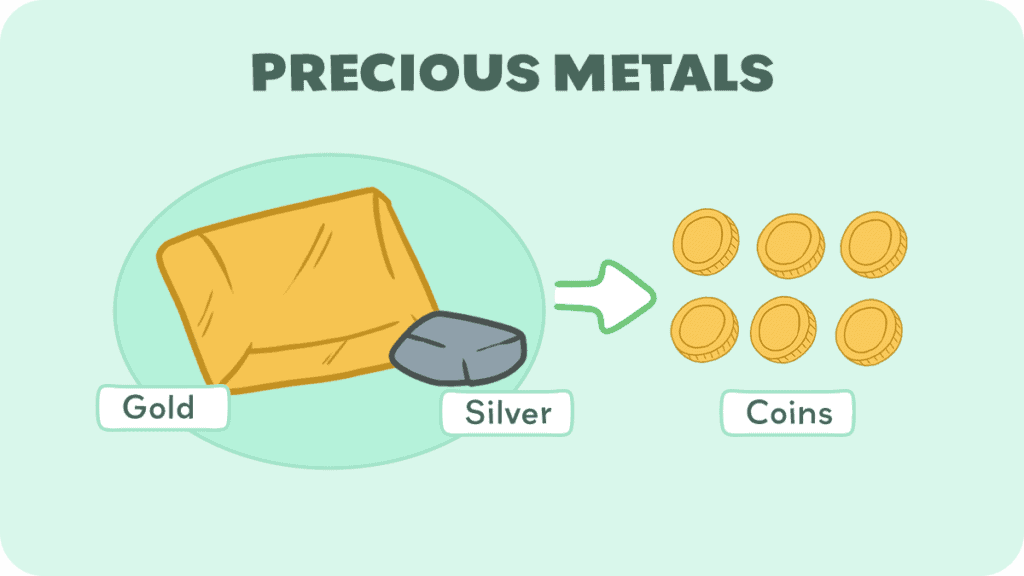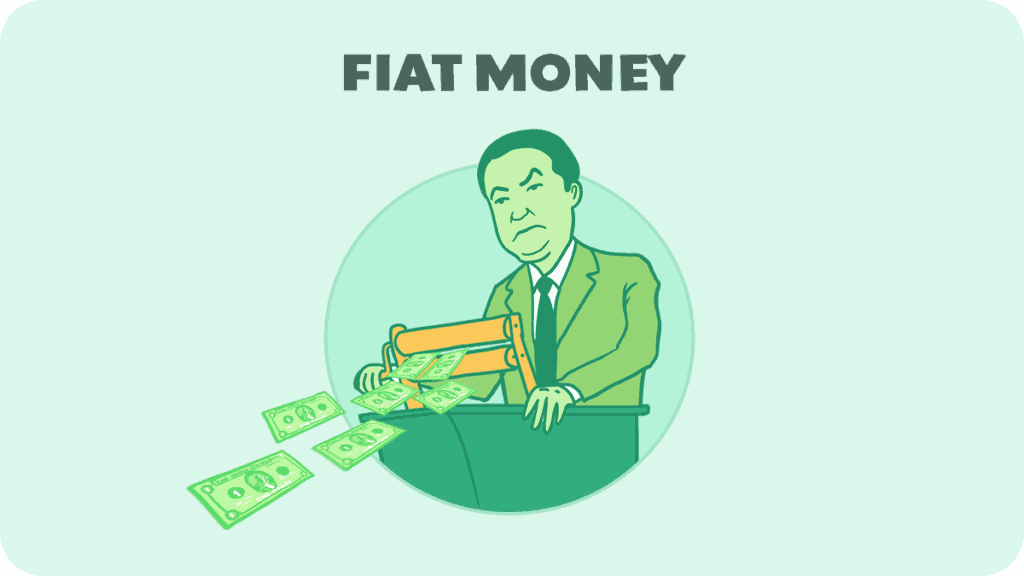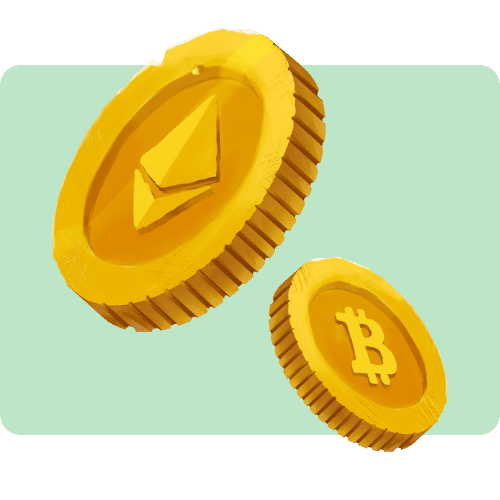For many people, the word ‘money’ conjures up an image of a little green piece of paper with a picture of a president on it. However, how often have you purchased something with money without using physical cash?
Instead, you simply swiped a card, entered information on a computer form, or wrote the amount on a piece of paper given to you by your bank (otherwise known as a check)?
Money can take many different forms. All that matters is that it is commonly accepted as a medium of exchange—that is to say, most or all people will accept it as payment in exchange for goods or services.
In this article, we will examine and compare the various forms money can take, including those that have intrinsic value and those that possess only extrinsic value.
Intrinsic vs. Extrinsic Value of Money

Intrinsic value is something that has value in and of itself.
In other words, the item being exchanged as money would be useful itself even if it could no longer be used as money and exchanged for goods and services.
For example, take something like a cow. In early societies, people often used livestock to pay for services or purchase goods from other people. However, even if other people stopped accepting cows as a form of payment, the cow itself would still be useful—it could be milked or butchered for beef.
Contrast this with money that possesses only extrinsic value. These forms of money are only valuable because others accept them as a medium of exchange.
Take, for example, the cash in your pocket. It possesses value because you can walk into a store and use it to purchase almost anything you want, from bubblegum to video games.
However, if everybody else suddenly refused to accept it, it would become worthless. Needless to say, you can’t milk or eat paper money, and it has no practical uses other than, perhaps, to burn for warmth.
Commodity Money

Commodity money is the most basic type of money and the first to be used in early barter systems. This type of money emerged when people began to accept valuable resources, such as livestock, in exchange for goods and services.
Throughout history, the most common form of commodity money has been precious metals such as gold and silver.
This money has intrinsic value, as the item being exchanged is itself valuable. Throughout history, many items have been used as commodity money, including…
- gold coins
- beads
- shells
- alcohol
- tobacco
- salt
- beans
- pearls
- stones
- tea
Representative Money
Representative money was the next step in the development of money and the first type of paper money. Representative money occurs when something—usually a paper note—is used to represent something valuable for which the note can be exchanged.
One example of representative money is the tobacco notes issued by Maryland, Virginia, and North Carolina in 1715. Because tobacco was a valuable commodity at the time, it was often used as currency.
As a result, these colonies issued notes that could be redeemed for a specified amount of tobacco. These notes made conducting daily transactions more convenient as people could simply exchange the notes rather than the tobacco itself.
Representative money itself has no intrinsic value; however, it is linked to something that does have intrinsic value.
Almost all forms of currency issued by governments during the age of the gold standard were representative money. Governments would issue paper money that was worth a specified amount of gold.
For example, if the US government says the price of gold is $100 an ounce, then one dollar would be worth 1/100 an ounce of gold. The representative money, then, derives its value from the value of the commodity backing it.
Fiat Money

Fiat money goes one step further. Fiat means “command of the sovereign” and derives from the Latin for “it shall be.” That’s basically what fiat currency is.
Fiat currency is money that is money because the government says it is so and it is widely accepted as such.
Unlike commodity money, which is valuable in and of itself, or representative money, which can be exchanged for something of value, fiat money has no value aside from its use as currency.
It is essentially a promise by the issuer (usually a government or central bank) that the currency is capable of being exchanged for goods and services and backed solely by the public’s faith in that issuer.
Disadvantages of Fiat Money
As such, fiat money has no intrinsic value. As a result, it is more prone to inflation and the possibility of collapse than either commodity or representative money.
Because it is backed exclusively by the word of the sovereign, the government can print as much of it as they like, unlike commodity money such as gold or silver, which must be mined, or representative money, which must be backed by a commodity.
This can lead to hyperinflation, as occurred in Zimbabwe under President Robert Mugabe. Additionally, if people lose faith in the issuer, the fiat money could become worthless, unlike the commodities or money used to represent them (assuming the issuer of the representative money honors their obligation to convert it into the valued commodity).
Other examples of currency crises include:
- Germany after World War 1
- the Mexican peso crisis of 1994
- the Asian crisis of 1997
- the 1998 Russian financial crisis
- the Argentine crisis of the late 1990s
- the economic crisis in Venezuela in 2016
- Turkey’s economic crisis in 2016
Advantages of Fiat Money
Despite the potential downside, fiat money does have some advantages. Because it isn’t linked to anything, the government has greater control of its supply and value, allowing the government to more reliably manage the credit supply, liquidity, and interest rates.
Additionally, since the government is the sole issuer, only it can increase the supply of money, unlike commodity or representative money which could be increased by, for example, the discovery of a new gold mine.
This lowers the risk of an unexpected devaluation of a nation’s currency. The benefits of a responsibly regulated fiat currency have led most modern nations to adopt a fiat currency, including:
- the US dollar
- the Euro
- the British pound
- the Japanese yen
- the Indian rupee
Commercial Money
Commercial money is money issued by commercial institutions such as banks or credit unions. The institutions guarantee payment, typically in the form of fiat money, by transferring deposits previously made at the institutions.
Traditionally, checks have been the most common form of commercial money; today, electronic payments such as debit cards, wire transfers, and internet payments are becoming more and more common.
Either way, this form of money allows an individual to deposit their money into a bank account and use it for payments without having to physically withdraw it from the institution.
Like fiat money, commercial money has no intrinsic value. In fact, it typically consists of transferring deposits of fiat money, which also has no intrinsic value.
However, because they are backed by reputable institutions, they are widely accepted. They are also widely used due to convenience and pave the way for instant electronic transfers to take place, allowing the economy to function with greater efficiency.
They also allow the issuance of credit cards, allowing individuals to borrow a pre-approved amount on demand, increasing purchasing power and creating greater economic activity.
Cryptocurrency

Cryptocurrencies are the newest form of money. Starting with Bitcoin in 2008, these digital currencies use blockchains to store transaction history using encryption algorithms.
They exist on a network that is distributed across a large number of public computers worldwide. It is a peer-to-peer currency that doesn’t rely on a central authority. This decentralized network allows them to exist outside the control of banks and governments, unlike commercial and fiat money.
Here are a few examples of cryptocurrencies:
- Bitcoin
- Litecoin
- Dogecoin
- Monero
- Ethereum
- Cardano
- Tether
- Dash
Unlike other forms of money, it is entirely digital, lacking physical representation. Like commercial and fiat money, it lacks intrinsic value. Its value derives from what people are willing to pay for it in terms of other currencies like fiat money on currency exchanges.
Its advantages are that, due to its decentralized nature, it is not prone to manipulation by a central bank or other authorities. It also is unlikely to collapse at a single point of failure the way fiat money can, as we referred to earlier in our discussion of currency crises. It is also fast and cheap.
The disadvantages of cryptocurrency include its price volatility. Being relatively new as a form of currency, the value of cryptocurrencies can fluctuate widely.
Additionally, the mining activities required to produce certain types of cryptocurrency can lead to high energy consumption.
Finally, because transactions, like many online activities, are done using pseudonyms, cryptocurrencies are convenient for use in criminal activities (though it is important to note that most criminals don’t use crypto because it is easier to track and prove what you did with it, if it is linked to you; it is pseudonymous not anonymous).
This last point may be a disadvantage or an advantage depending on your point of view.
Conclusion
Money can take many forms beyond the age-old question, “Cash or card?” Some forms of money—in particular, commodity money—have intrinsic value as the good being used as a medium of exchange has value in and of itself.
Other forms, like representative money, are simply used as a stand-in for something of value and are exchanged in its place out of convenience.
Finally, some forms of money, such as fiat money, commercial money, and cryptocurrencies, have no intrinsic value but are widely accepted and used as money because people are willing to accept them as payment for goods and services.
I hope you enjoyed this article. Please subscribe to read more fun and informative articles like this one.

